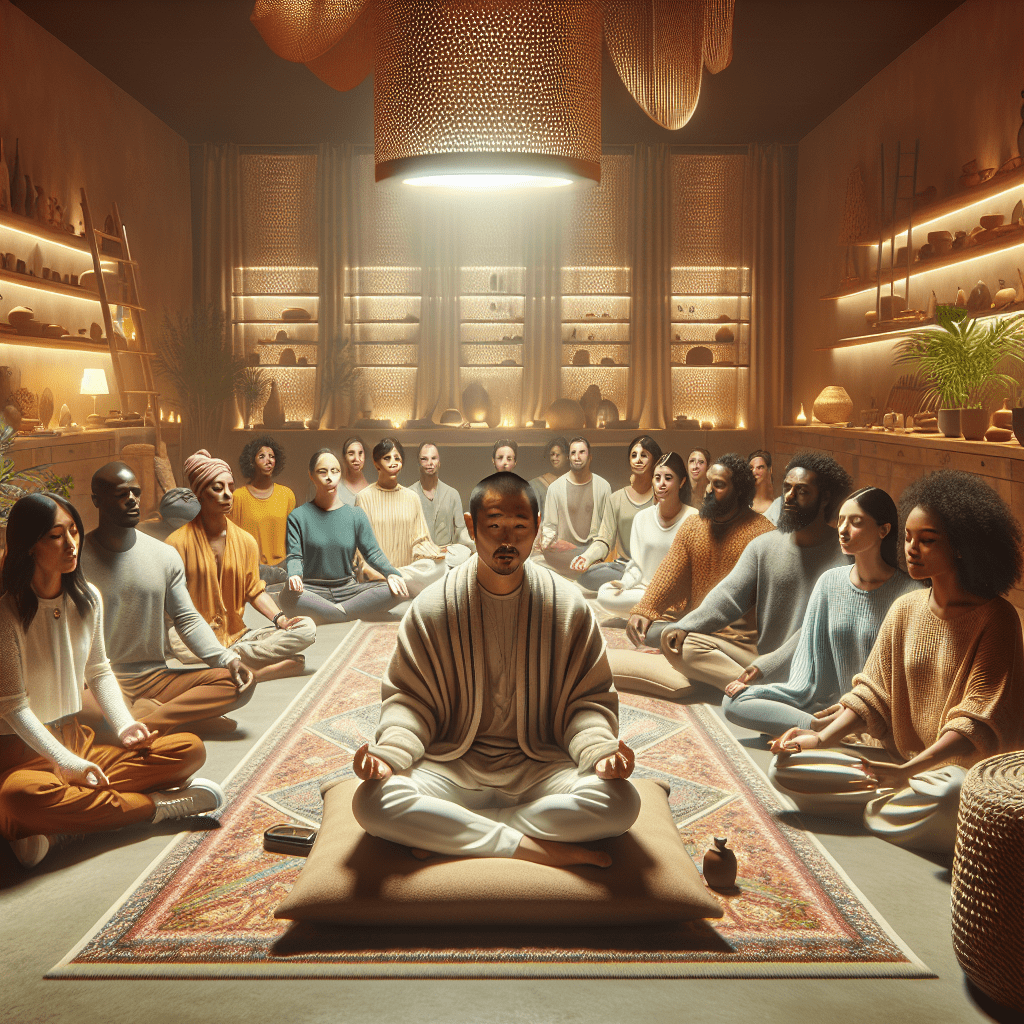
Prioritize your mental well-being daily. Enhance your life by nurturing your mental health with the Smart Meditation app. Break free from stress, alleviate anxiety, and enhance your sleep quality starting today.
Should You Gaze Downward During Meditation?
Unveiling the Secrets of Meditation Postures
In the vast sea of meditation practices, where tranquility and mindfulness sail the mind towards serene shores, the role of physical posture often gets overshadowed by mental techniques. However, folks, it’s a game-changer! Whether you should be gazing downward during meditation isn’t simply a matter of preference but delves deeper into the anatomy of focus and how we can harness our body’s posture to amplify our meditation experience. So, let’s dive in, shall we?
The Downward Gaze: A Pathway to Concentration
When it comes to meditation, there’s no one-size-fits-all. However, the act of casting one’s gaze downwards has roots in numerous traditions and for good reasons too.
1. Reducing Sensory Input: Ever heard the saying “out of sight, out of mind”? Well, it holds a nugget of truth in the context of meditation. By directing your gaze downward, you’re essentially limiting the field of vision, which in turn, helps crank down the volume of external visual stimuli. This minimalism approach can be a godsend, especially in a world where your senses are constantly bombarded left, right, and center.
2. Fostering Inward Reflection: There’s something inherently introspective about looking downwards. It’s as if you’re diving into the depths of your soul, seeking answers within rather than from the distractions of the external world. This posture can be particularly beneficial for practices focusing on self-exploration or resolving internal conflicts.
3. Physical Ease and Stability: Let’s face it, holding a fixed gaze straight ahead for an extended period can be a real pain in the neck—literally. By allowing your eyes to gently rest in a downward position, you’re also promoting a more relaxed and sustainable physical stance. This can be particularly useful for beginners or those engaging in longer sessions of meditation.
But here comes the kicker – while a downward gaze can be incredibly beneficial for concentration, introspection, and physical comfort, it’s not a one-stop-shop for everyone. Just like a bespoke suit, your meditation posture should be tailored to fit you perfectly.
Customizing Your Meditation Experience
Embarking on the journey of meditation is akin to exploring uncharted territories within your mind. And guess what? You’re the captain of this expedition. Here’s how you can tailor your meditation experience to suit your unique needs:
-
Experiment with Different Postures: Besides the downward gaze, consider exploring other postures such as closing your eyes, gazing at a fixed point, or even open-eye meditation. Each posture carries its flavor and could unlock new dimensions in your practice.
-
Listen to Your Body: If you find any posture causing discomfort or distraction, there’s no harm in adjusting. Your body’s feedback is invaluable in refining your practice.
-
Incorporate a Holistic Approach: Remember, your gaze is but one aspect of your posture. Pay attention to your spine alignment, hand placement, and breathing. A holistic approach ensures a balanced and holistic meditation experience.
In conclusion, while gazing downward during meditation can offer a multitude of benefits such as enhanced focus, introspective depth, and physical comfort, it’s crucial to remember the golden rule of meditation: personalization is key. So go ahead, unfurl the sails and let your intuition guide you on this inward odyssey. The perfect posture awaits you, and with it, a deeper connection to the tranquil seas of your mind. Happy meditating!





